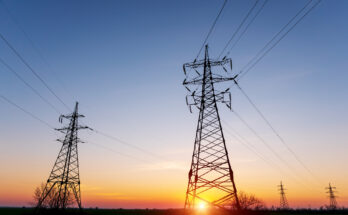The Chilean government and AES Corporation, a US-based energy infrastructure corporation, are working together to increase the installed base of battery storage in the Latin American country.
At the COP26 UN climate conference, the two announced that they are collaborating to increase Chile’s installed battery energy storage system (BESS) capacity to more than 300MW by 2023. During the COP26 meetings in Glasgow, there was a rare direct reference of battery storage.
In Chile’s Antofagasta area, AES Andes, AES’ local subsidiary (previously known as AES Gener), is currently building a 112MW / 560MWh five-hour duration lithium-ion BESS project with 253MW of renewable energy output.
In October 2020, the business broke ground on that project. AES’ track record in Chile is even more remarkable for the energy storage industry: in 2009, the firm installed the world’s first grid-connected large-scale lithium-ion battery storage system to improve the efficiency of a Chilean coal power station.
Fluence, which is part-owned by AES and recently floated an IPO that drove its worth up to roughly US$4.7 billion, is AES’ preferred battery storage system provider and integrator.
The announcement covered the addition of 188MW of additional new BESS capacity. According to AES Andes CEO Ricardo Falu, this represents a $400 million investment by Chile. It would raise the country’s installed capacity in megawatt-hours to 1,563MWh, up from slightly over 60MWh currently.
By 2030, the country’s energy policy plans for renewable energy to provide 70% of the country’s energy. Juan Carlos Jobet, Chile’s Minister of Mining and Energy, stated that the country’s National Energy Policy predicted the need for at least 2,000MW of energy storage to assist integrate renewable energy into the country’s system.
Minister Jobet stated that the power grid requires a quick growth in energy storage capacity of “all sorts” of technologies, including batteries and liquid air energy storage (LAES).
Highview Power, the world’s only commercial and grid-scale LAES system provider, has already started work on a long-duration 50MW/500MWh LAES facility in Chile’s sun-drenched Atacama Desert.
In terms of other large battery projects, Energy-Storage.news reported at the End of October that Statkraft Chile is developing a wind power project on public land that will include 1GWh of batteries, and that Engie Chile had won 1.5GW of development rights for hybrid solar and wind generation with battery storage in July.
At the opposite end of the spectrum, US commercial and industrial (C&I) energy storage supplier Stem Inc recently announced that it is developing Chile’s first virtual power plant (VPP), which would integrate behind-the-meter C&I systems ranging from 0.5MWh to 2MWh into a bigger grid asset.
On November 3, AES released its third-quarter financial results, stating that it expects to add 5GW of new long-term renewable energy contracts this year and reaffirming its annual growth target of 7-9 percent until 2025.





